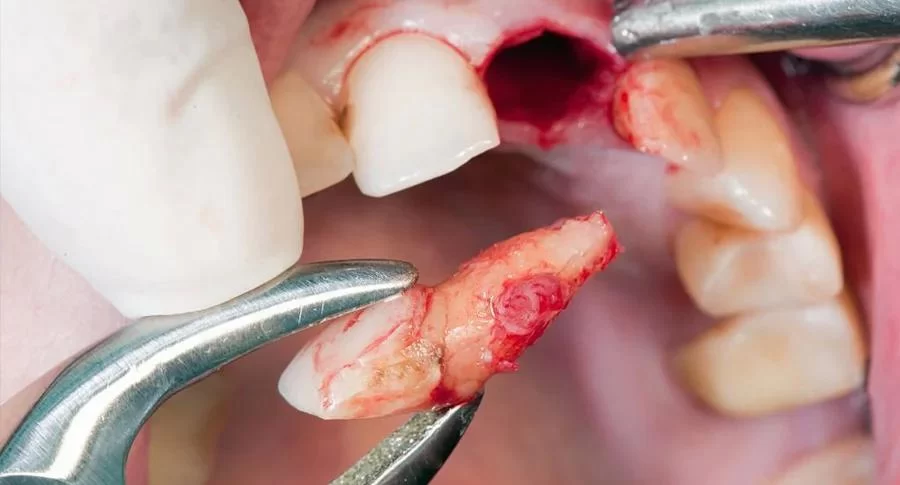
How to Care for Your Teeth After a Tooth Extraction: Essential Tips for Quick Recovery
- What to Expect Immediately After the Extraction
- Pain Management and Swelling Control
- Maintaining Oral Hygiene During Recovery
- Dietary Tips After Tooth Extraction
- When to See a Dentist After the Extraction
1. What to Expect Immediately After the Extraction
Tooth extractions can be a nerve-wracking experience, but the recovery process doesn’t have to be daunting. The first step in how to care for your teeth after a tooth extraction is understanding what to expect right after the procedure. Typically, you’ll experience some discomfort, swelling, and minor bleeding during the first few hours. It's crucial to follow your dentist's post-extraction instructions closely.
After the extraction, your dentist will place a gauze pad on the extraction site to help stop the bleeding. Make sure to bite down on the gauze gently for 30–45 minutes, and change it as needed. Avoid touching the extraction site with your fingers or tongue to prevent infection and irritation.
2. Pain Management and Swelling Control
Pain and swelling are common after a tooth extraction, but with proper care, they can be minimized. Here’s how to manage discomfort during your recovery:
- Use Over-the-Counter Pain Relievers: Nonsteroidal anti-inflammatory drugs (NSAIDs), like ibuprofen, are usually recommended for pain relief and to reduce swelling. Follow the dosage instructions provided by your dentist or pharmacist.
- Cold Compress: Applying a cold compress to the outside of your cheek near the extraction site can significantly reduce swelling and provide some relief from pain. Use it for 20 minutes at a time, with 20-minute breaks in between.
- Avoid Smoking and Alcohol: Both smoking and alcohol can slow down the healing process and increase the risk of complications, like dry socket. It’s best to avoid these for at least 48 hours after the extraction.
While discomfort is normal, if you experience severe pain or swelling that doesn’t improve after a few days, contact your dentist to rule out complications.
3. Maintaining Oral Hygiene During Recovery
It’s essential to keep your mouth clean even after a tooth extraction, but you need to be extra gentle during the healing process. Here’s how to maintain good oral hygiene without disturbing the extraction site:
- Gentle Brushing: Continue brushing your teeth twice a day, but be cautious around the extraction site. Avoid brushing the area directly where the tooth was removed for at least 24–48 hours. Use a soft-bristled toothbrush and a gentle touch.
- Rinse with Saltwater: After the first 24 hours, gently rinse your mouth with warm saltwater (1/2 teaspoon of salt in 8 ounces of water) to help keep the area clean and reduce the risk of infection. Do this 2–3 times a day, especially after meals.
- Avoid Spitting and Sucking Movements: For the first few days, avoid activities like spitting, sucking through a straw, or vigorous rinsing, as these can dislodge the blood clot in the socket and lead to a painful condition called dry socket.
Maintaining oral hygiene is a delicate balance after a tooth extraction, but with care, you can keep your mouth clean and prevent infection.
4. Dietary Tips After Tooth Extraction
What you eat during the first few days after a tooth extraction plays a major role in your recovery. Opt for soft, easy-to-eat foods that won’t irritate the extraction site. Here are some dietary recommendations:
- Soft Foods: Stick to soft foods like mashed potatoes, yogurt, smoothies, and soup (make sure it’s lukewarm, not hot). Avoid foods that require a lot of chewing, as they could cause discomfort or disrupt the healing process.
- Hydration is Key: Drink plenty of water to stay hydrated, but avoid using straws for the first few days. The suction could dislodge the blood clot in the extraction site and cause dry socket.
- Avoid Hot and Spicy Foods: Hot, spicy, or acidic foods can irritate the healing site and cause discomfort. Stick to bland foods and avoid anything too hot for the first few days.
Avoiding tough foods and sticking to a soft diet will allow your extraction site to heal faster and more comfortably.
5. When to See a Dentist After the Extraction
While most tooth extractions heal without issues, it’s important to be aware of potential complications and know when to contact your dentist:
- Severe Pain: If you experience severe pain or throbbing in the days following the extraction, it could be a sign of an infection or dry socket. Call your dentist if this happens.
- Unusual Bleeding: Light bleeding is normal in the first few hours after the extraction, but if bleeding persists or becomes heavy, it’s important to seek medical attention.
- Signs of Infection: If you notice swelling that worsens, fever, or a bad taste in your mouth, these could be signs of an infection. It’s best to get in touch with your dentist right away.
If you’re unsure about your recovery or have concerns, don’t hesitate to reach out to your dentist. They are there to guide you through the healing process and ensure everything is progressing as expected.
Taking care of your teeth after a tooth extraction is crucial for a smooth recovery. By following these steps, you’ll not only help ensure your healing goes smoothly but also maintain the health of your remaining teeth. For additional advice or recommendations on post-extraction care, visit Dentistry Toothtruth.
Ready for a smooth recovery after your tooth extraction? Discover expert tips and products to help speed up your healing and maintain optimal oral health.







 Madison Oral Surgery & Dental Implants4.0 (661 review)
Madison Oral Surgery & Dental Implants4.0 (661 review) SoCO Smiles Orthodontics4.0 (187 review)
SoCO Smiles Orthodontics4.0 (187 review) Cahill Michael T DMD5.0 (8 review)
Cahill Michael T DMD5.0 (8 review) Raynham Dental Group, Office of Dr. Michael Scanlon4.0 (462 review)
Raynham Dental Group, Office of Dr. Michael Scanlon4.0 (462 review) Dental Dreams4.0 (967 review)
Dental Dreams4.0 (967 review) EON Clinics4.0 (24 review)
EON Clinics4.0 (24 review) The Importance of Oral Health Education During Pregnancy for a Healthy Pregnancy
The Importance of Oral Health Education During Pregnancy for a Healthy Pregnancy Best Tips for Brushing Your Teeth Properly for Healthy Gums: Essential Techniques for Oral Health
Best Tips for Brushing Your Teeth Properly for Healthy Gums: Essential Techniques for Oral Health Why Skipping Dental Checkups Can Lead to Bigger Oral Health Problems
Why Skipping Dental Checkups Can Lead to Bigger Oral Health Problems Advantages of Porcelain Dental Restorations
Advantages of Porcelain Dental Restorations How Can Diabetes Cause Tooth and Gum Problems? Preventing and Managing Oral Health Issues
How Can Diabetes Cause Tooth and Gum Problems? Preventing and Managing Oral Health Issues Healthy Habits for Promoting Good Oral Health and Hygiene: Tips for a Healthy Smile
Healthy Habits for Promoting Good Oral Health and Hygiene: Tips for a Healthy Smile